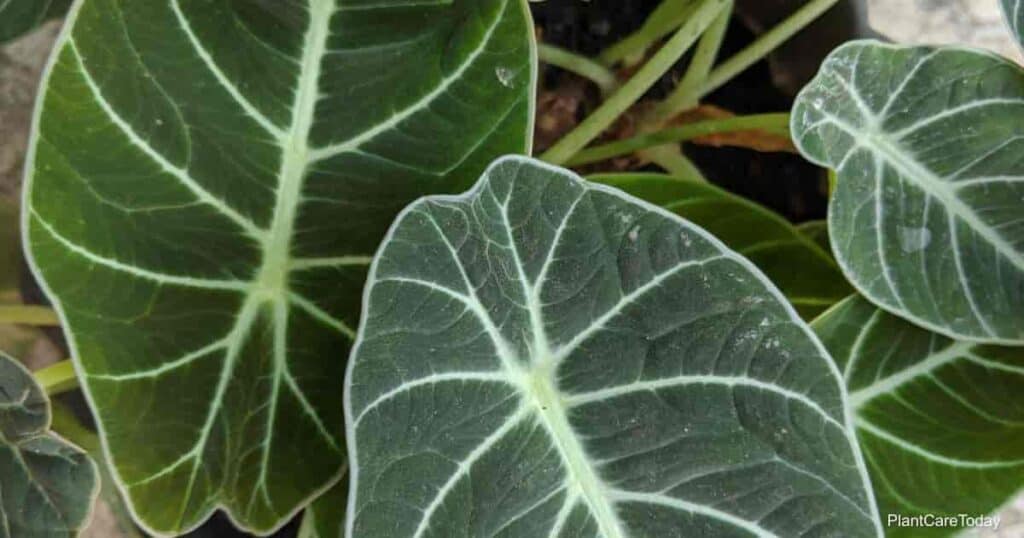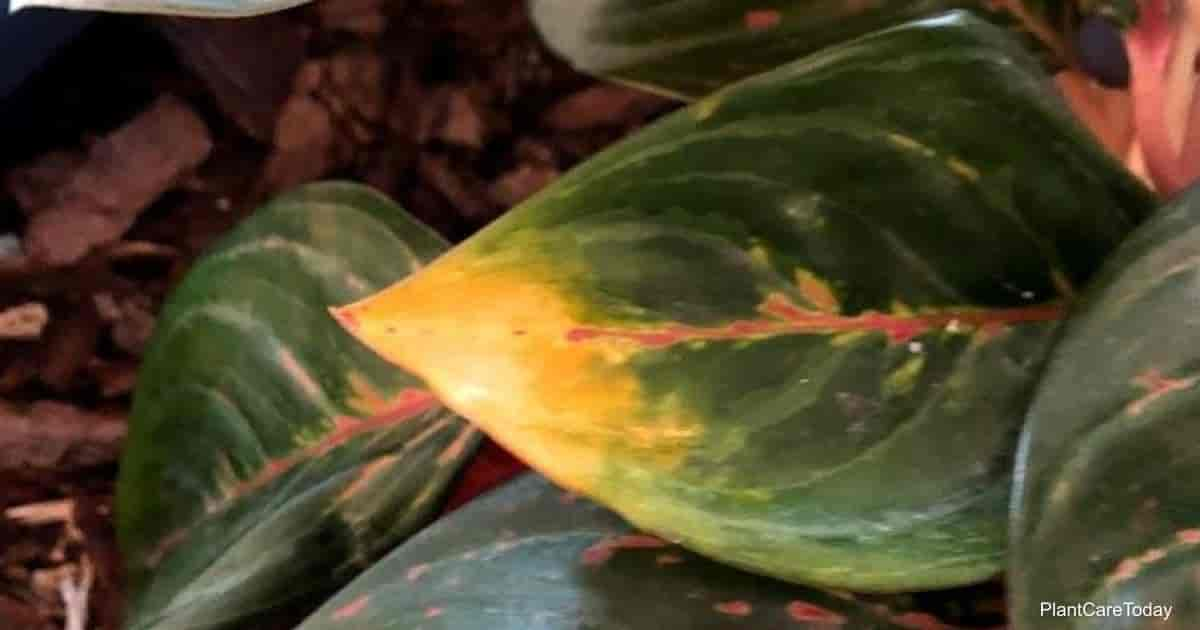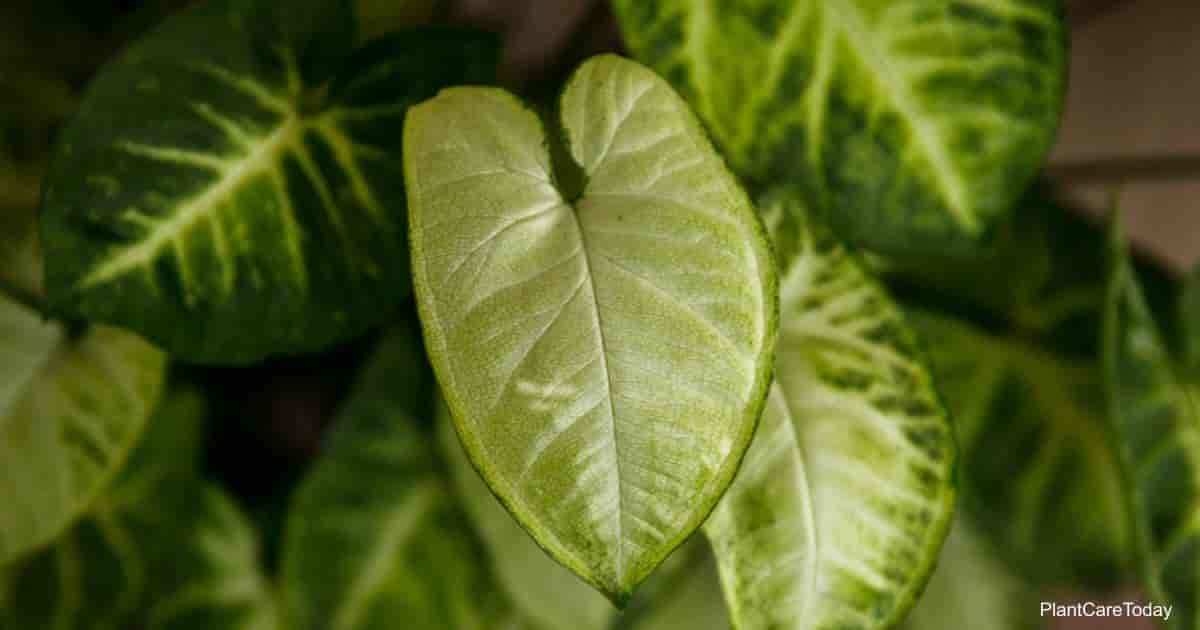Alocasia is an attractive group of plants that consists of 8 species and numerous cultivars.
These plants have gained nicknames such as “elephant ear plant” and “African mask plant” due to their large, shapely leaves.
Whether you go with a classic such as Alocasia Amazonica or one of the hybrids (ex: Alocasia amazonica ‘Polly’ or Alocasia micholitziana ‘Frydek’), you’re sure to get a showy display of foliage.
Unfortunately, there’s one major problem with owning an alocasia: they become addictive.
You may choose to go out and buy multiple variants, so no two plants are alike.
However, many enthusiasts tend to find a favorite sport and stick with it.
If you’re one of those people, rejoice! Because propagating these plants can be surprisingly easy.
How To Propagate Alocasia?
Alocasia is a tubular plant, meaning the simplest way to get more is simply by dividing the one you have.
These plants are very forgiving, and the plantlets can be raised in both soil and water.
Rhizome Division: The Basics
If you’ve ever owned an Aloe vera, you’re probably already familiar with division.
This method is perfect for rhizome plants that don’t fare as well when propagated by cuttings.
To begin the process, choose whether you’ll be using soil or water for the medium and prepare the destination, so your plant’s roots aren’t exposed for too long.
Step 1: Gently remove your alocasia from its pot and shake off the excess dirt.
You can soak or spray the roots to remove any densely packed soil.
Step 2: Examine your plant and choose a few good offshoots to divide.
The baby plants should have at least three leaves to ensure rapid recovery.
Gently tease the roots apart to separate the babies from the mother plant.
In the event of tangles, you can use a sterilized knife or scissors.
Step 3: Once you’ve separated all the offshoots you wish to use, take a moment to examine the root system on the mother and plantlets for signs of disease.
This is the perfect time to prune away the sickly roots, but be careful not to get overzealous or harm the healthy roots.
Step 4: Begin the potting process for your plants, using fresh soil for the mother plant.
Note: Accidents Happen
Sometimes, while dividing a plant, you may accidentally end up with an offshoot with only a few roots or even just one.
Thankfully, this isn’t the end of the world, and you can use a little bit of rooting hormone before adding it to the new medium.
With water propagation, you may choose to add the hormone directly to the water.
Keep an eye on the plant and ensure it isn’t disturbed while it reroots itself, usually in about 4 to 6 weeks.
Soil Propagation
Working with soil is the more common propagation method used.
Be sure the pot you choose is well-draining (to avoid root rot) and add in a good soil mix.
We suggest equal parts general potting mix, coco coir or peat, and coarse sand or perlite.
This mix ensures the soil doesn’t dry out too fast or slow while providing a good environment for root expansion.
Gently place the plantlet in its new pot and cover the roots, then add a little distilled water to moisten.
The plantlet will suffer from transplant shock, so expect a couple of weeks before the plant shows any new growth.
Put the pot somewhere with bright, indirect light, and you’ll soon get to enjoy some lush new alocasias.
Water Propagation
Water propagation may be a temporary or permanent choice for propagation., often used for plants that have lost their root system during division
You’ll need to gently rinse away any remaining soil, taking care to use room temperature distilled water for minimal risk of damage.
Many people prefer a clear glass vase to look at the roots, but a ceramic vase will also do for the alocasia baby’s new home.
Fill the vase with room temperature distilled water or rainwater and carefully put the plantlet in to submerge the roots.
Place the vase in a spot with bright, indirect sunlight to avoid algae growth.
Top up the vase as needed.
When the mother plant is due for feeding, give your plantlets’ vases a full water change and add some liquid fertilizer to the freshwater.
NOTE: Most Alocasia plants grown commercially are produced in the lab using tissue culture propagation.
Credit : Gary Antosh (https://plantcaretoday.com/alocasia-propagation.html)





